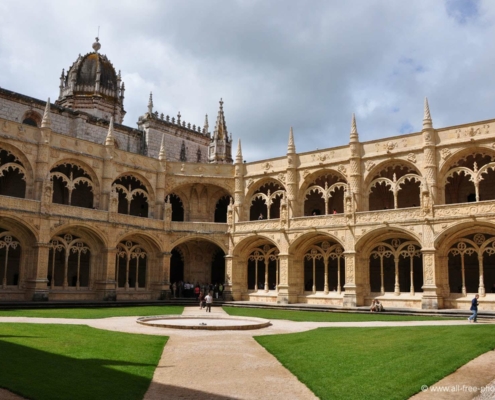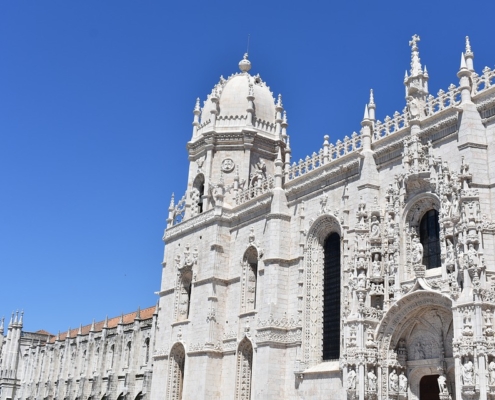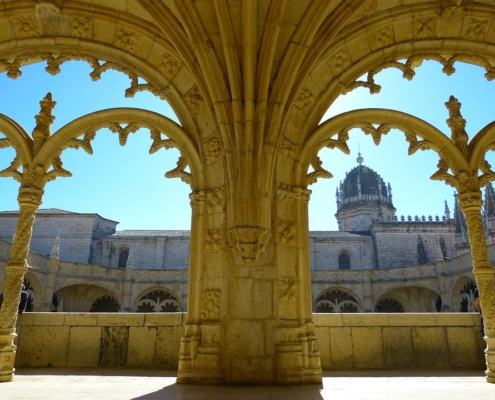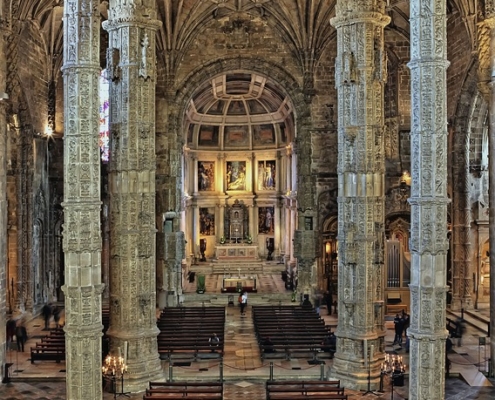Jerónimo Monastery
Diogo de Boitaca, Juan de Castilho, Nicolau Chanterene, Diogo de Torralva, Jérôme de Rouen | 1601 | Visitor Information
"
The monastery and church were built in over 100 years with taxes from imported goods from Africa and the far east. Unsurprisingly, several architects and numerous sculptors worked on the building, together achieving a level of cohesive realization in creating one of the most majestic examples of Late Gothic Manueline style of architecture. The King donated the construction to the monks of the Hieronymite order, who were tasked with praying for the soul of the King and his family— likely no small task when considering the atrocities of Portuguese explorers and traders among plundered lands all in the name and with approval of their King. Regardless, for the next several hundred years the monks continued in their duties until the order was dissolved and the monastery abandoned in 1833. For a time it was a children’s school, but it gradually fell from its grandeur into disrepair thanks to earthquakes and neglect. It has seen several restoration projects and cleanings since the mid-1800s, where it once again became the pride of the capital city. In 2007, the Treaty of Lisbon was signed at Jerónimos. Today, the monastery is a UNESCO world heritage site. Inside are the tombs of the royal family, Vasco de Gama, and Luís de Camões among other notable Portuguese notables from the age of its construction.
"
Information provided in part by: Atlas Obscura







